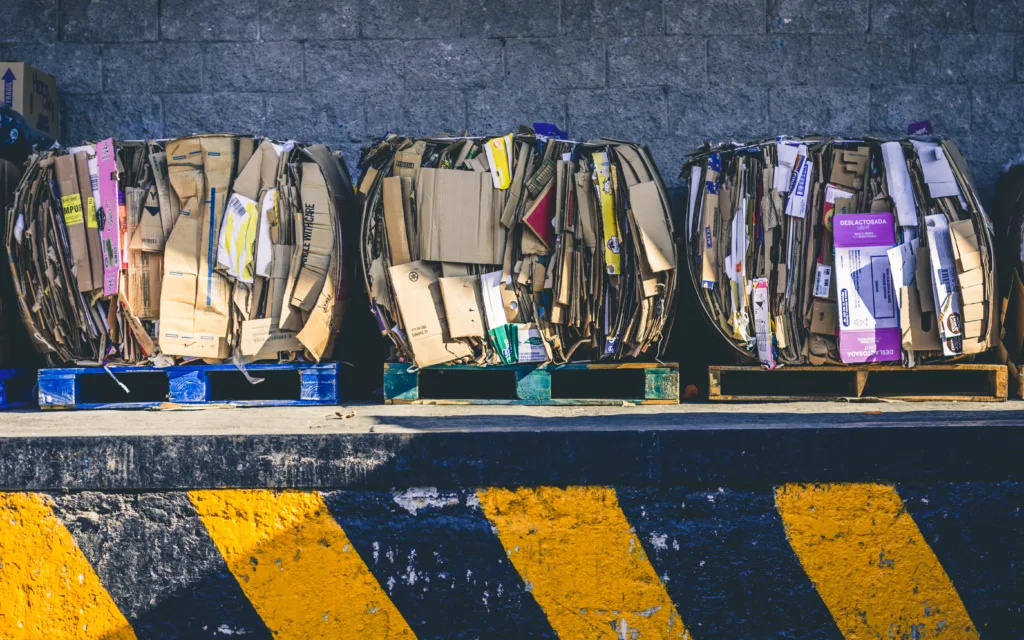Paper is one of the most commonly used materials in our daily lives. From newspapers to books, paper is everywhere. But have you ever wondered what happens to paper after we throw it away? Is paper biodegradable? In this article, we will explore the answer to this question.
Firstly, let’s define what we mean by biodegradable. Biodegradable means that a material can be broken down into natural substances by the action of living organisms, such as bacteria and fungi. When a material is biodegradable, it can become a part of the natural cycle of life, without causing harm to the environment.
So, is paper biodegradable? The answer is yes. Paper is biodegradable and can be broken down by bacteria and other microorganisms. In fact, paper is one of the fastest biodegradable materials, taking only 2 to 6 weeks to decompose in a landfill.
However, the biodegradability of paper depends on a few factors. For example, if paper is coated with plastic or other synthetic materials, it will take much longer to decompose. This is because these materials are not biodegradable and will remain in the environment for a long time.
Moreover, the way we dispose of paper can also affect its biodegradability. When paper is sent to a landfill, it is typically buried under layers of other waste, wich creates a lack of oxygen. This lack of oxygen slows down the decomposition process, making it take longer for the paper to break down.
On the other hand, when paper is composted, it can break down much faster. Composting provides the necessary oxygen and microorganisms for the paper to decompose quickly and become a part of the natural cycle.
It’s worth noting that while paper is biodegradable, its production has negative environmental impacts. Paper production contributes to air and water pollution, greenhouse gas emissions, and the displacement of rural and indigenous communities from the mass planting of trees.
Therefore, it’s important to reduce our paper consumption and recycle as much as possible. Recycling paper not only reduces waste but also saves energy and resources compared to producing new paper from trees.
Paper is biodegradable and can be broken down by bacteria and other microorganisms. However, the biodegradability of paper depends on its composition and how it is disposed of. While recycling paper is a great way to reduce waste and conserve resources, it’s also important to reduce our paper consumption and be mindful of the negative environmental impacts of paper production.
How Long Does It Take Paper To Biodegrade?
Paper is a biodegradable material, which means it can be broken down naturally by microorganisms and other living organisms in the environment. The length of time it takes for paper to biodegrade depends on varius factors, such as the type of paper, the conditions in which it is disposed of, and the surrounding environment.
Generally, it takes around 2 to 6 weeks for paper to biodegrade in a natural environment, such as a compost pile or a landfill where there is enough moisture, oxygen, and microorganisms to facilitate the decomposition process. However, in certain conditions, such as dry or anaerobic environments, the process may take longer or may not occur at all.
It is worth noting that not all paper products are created equal, and some may take longer to biodegrade than others. For instance, glossy or coated paper, which is commonly used in magazines and flyers, may take longer to break down due to the presence of chemicals and additives in the coating. Similarly, paper products that are heavily processed or contain synthetic fibers may also take longer to biodegrade.
While paper is a relatively quick and easy material to biodegrade, it is important to dispose of it properly and consider using alternatives, such as digital documents or reusable materials, to reduce waste and minimize environmental impact.

Why Is Paper Not Eco Friendly?
There are several reasons why paper production is not considered eco-friendly. Here are some of the main issues:
1. Air and water pollution: The production of paper involves the use of chemicals, such as bleach and dyes, which can release harmful pollutants into the air and water. These pollutants can have negative impacts on wildlife, aquatic life, and human health.
2. Agricultural waste: The cultivation of trees for paper production often involves the use of pesticides and fertilizers, which can lead to soil degradation and the loss of biodiversity. Additionally, the clearing of land for tree plantations can lead to the displacement of rural and indigenous communities, who may rely on that land for their livelihoods.
3. Greenhouse gas emissions: The production of paper requires a significant amount of energy, which often comes from the burning of fossil fuels. This can lead to the release of greenhouse gases, such as carbon dioxide, into the atmosphere, contributing to climate change.
4. Waste and recycling: Paper is a major contributor to municipal waste, and much of it ends up in landfills where it can take years to decompose. While recycling can help reduce the environmental impact of paper production, it is not a perfect solution as it still requires energy and resources to collect, transport, and process the recycled materials.
While paper is a useful and necesary product, its production and disposal can have negative impacts on the environment.
Is Paper Compostable Or Not?
Paper is absolutely compostable! In fact, paper is a great material to use in composting. It is rich in carbon, which is an essential component of healthy compost. However, it is best to use uncoated paper such as newsprint, cardboard, and office paper, as coated paper may cotain chemicals that are not safe for composting. It is also important to shred or tear the paper into small pieces to allow for faster decomposition. Paper mulch is also safe to use in gardening as it breaks down over time and adds organic matter to the soil. using paper in composting and gardening is a great way to recycle and reduce waste.
Does Paper Biodegrade Fast?
When it comes to the speed of biodegradation of paper, it largely depends on the environmental conditions it is exposed to. In a landfill, where there is a lack of oxygen, it may take paper around 2-6 weeks to decompose. However, in other environments such as composting facilities or natural settings, paper can biodegrade much faster. In fact, in optimal conditions, paper can biodegrade wihin a matter of days. It’s important to note that the type of paper also plays a role in the biodegradation process. For example, unbleached paper or paper made from natural fibers tend to biodegrade faster than bleached paper or paper made from synthetic fibers.

Conclusion
Paper is indeed biodegradable and it decomposes relatively quickly, taking only 2 to 6 weeks to break down in a landfill. However, the production of paper contributes to a range of environmental issues such as air and water pollution, greenhouse gas emissions, and the displacement of rural and indigenous communities. It is, therefore, crucial to reduce paper consumption and increase recycling efforts to minimize the negative impact on the environment. While paper is generally safe for use as mulch or compost, it is important to avoid using colored or glossy paper that may contan toxic heavy metals. By taking simple steps towards reducing paper waste, we can help to protect our planet and ensure a sustainable future for generations to come.
